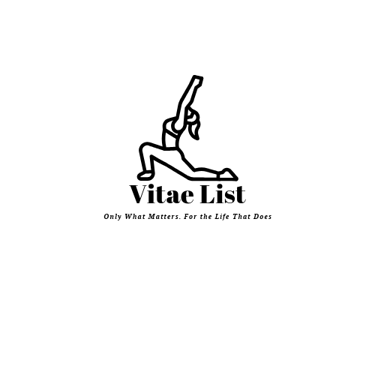The Role of Weightlifting Belts, Straps, and Sleeves: When to Use Them
Discover when and how to use weightlifting belts, straps, and sleeves to enhance your strength training performance. This guide from Vitae List breaks down each piece of gear — explaining what it does, when it’s worth wearing, and how to avoid becoming over-reliant on it. Learn how to lift safely, build strength, and choose the right tools for your goals.
FITNESS GEAR
Vitae List
10/11/20253 min read


The Role of Weightlifting Belts, Straps, and Sleeves: When to Use Them
Disclosure: Vitae List is a participant in the Amazon Services LLC Associates Program, an affiliate advertising program designed to provide a means for sites to earn fees by linking to Amazon.com and affiliated sites. As an Amazon Associate, we earn from qualifying purchases at no extra cost to you.
When you step into any gym, it’s easy to spot lifters wearing belts, wrapping their knees, or tightening wrist straps. But do you really need all that gear to get stronger? The truth is that weightlifting accessories serve a purpose — when used properly. They can protect your joints, improve form, and help you lift heavier loads safely. However, relying on them too early or using them incorrectly can slow your progress and even create imbalances.
This guide covers the essentials: belts, straps, and sleeves — when to use each, what they do, and how to choose the right gear for your strength training journey.
Weightlifting Belts: Support, Not a Shortcut
A weightlifting belt doesn’t make you stronger — it helps you lift more safely under heavy loads by increasing intra-abdominal pressure and supporting your lower back.
Think of it as an external brace that allows your core to stay tighter during squats, deadlifts, or overhead presses.
When to use a belt:
During lifts at or above 80% of your max effort
For compound, axial-load movements (squat, deadlift, overhead press)
When training for maximal strength or powerlifting
When not to use a belt:
During light warm-ups or accessory lifts
When working on building natural core strength
Tip: If you’re new to belts, look for a 4-inch, single-prong leather belt with consistent width (no tapering). Brands like Rogue, Element 26, or Gym Reapers Fitness offer excellent options for beginners to advanced athletes. We use the Gym reapers Quick Locking Weight Lifting Belt - https://amzn.to/48rGsOV
Lifting Straps: Grip Support When You Need It
Lifting straps are a lifesaver when your grip gives out before your muscles do. They wrap around the barbell or dumbbell handle, helping you maintain hold during heavy pulls.
When to use straps:
On high-intensity pulling movements (deadlifts, rows, pull-ups)
When grip fatigue limits your performance
During volume training or high-rep sets
When not to use straps:
On warm-up sets or grip-specific training
When building grip strength is the goal
Straps are a training tool, not a crutch. They should assist your lifts, not replace grip development altogether. Cotton and nylon straps are ideal for general use, while leather provides durability for heavier lifting cycles. Again we use and personally recommend Gym Reapers Brand lifting straps, they have the right amount of length, the cotton is a good durable material and the neoprene padding help protect your wrists. On pull days or back day these are an absolute must - Gymreapers Lifting Wrist Straps for Weightlifting - https://amzn.to/4mXKCS7
Sleeves: Compression and Protection
Sleeves — whether for knees, elbows, or wrists — serve two main purposes: joint warmth and compression. They can reduce stiffness, enhance circulation, and add stability without restricting range of motion.
When to use sleeves:
During moderate to heavy compound lifts
If you’re managing mild joint discomfort
To stay warm during colder sessions or outdoor training
When not to use sleeves:
If you’re masking chronic pain or instability
During mobility or flexibility work
For most lifters, 7mm neoprene sleeves provide the ideal balance of warmth and support. Lighter 5mm versions work well for CrossFit or hybrid training sessions. Like all the other types we have Gym Reaper as our recommended brand, they do the job and don't break the bank. Gymreapers 7MM Neoprene Sleeves - 1 Year Warranty (Military Green/Black, Large) - https://amzn.to/4q6Z2ST
When to Go Gear-Free
There’s a time and place for every piece of equipment — and a time to train without it. Going gear-free builds foundational strength and improves body awareness.
Try alternating between belted and unbelted sessions, or train grip directly with farmer’s carries and thick-bar holds to balance out your progress.
Remember, equipment enhances performance — but technique, consistency, and recovery drive real strength gains.
Final Thoughts
Belts, straps, and sleeves are valuable tools when used with purpose. They can support your performance, prevent injury, and build confidence under load — but they’re not replacements for strong fundamentals.
Start simple, focus on form, and introduce gear gradually as your training demands grow.
Train smart. Lift strong. Build with intent.
